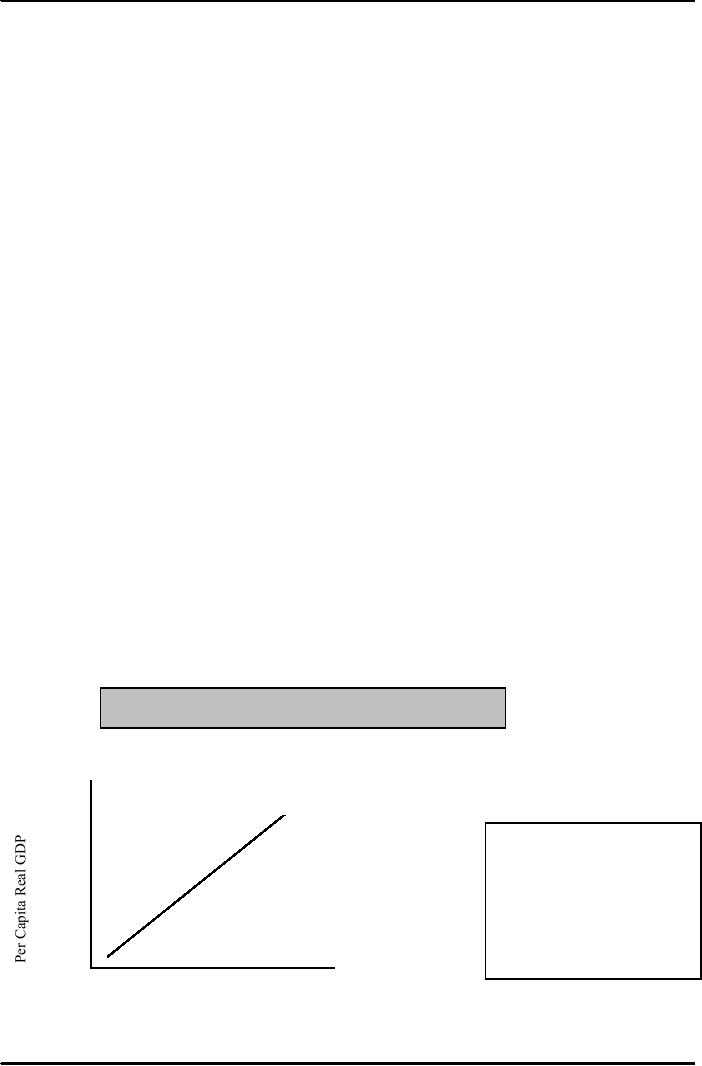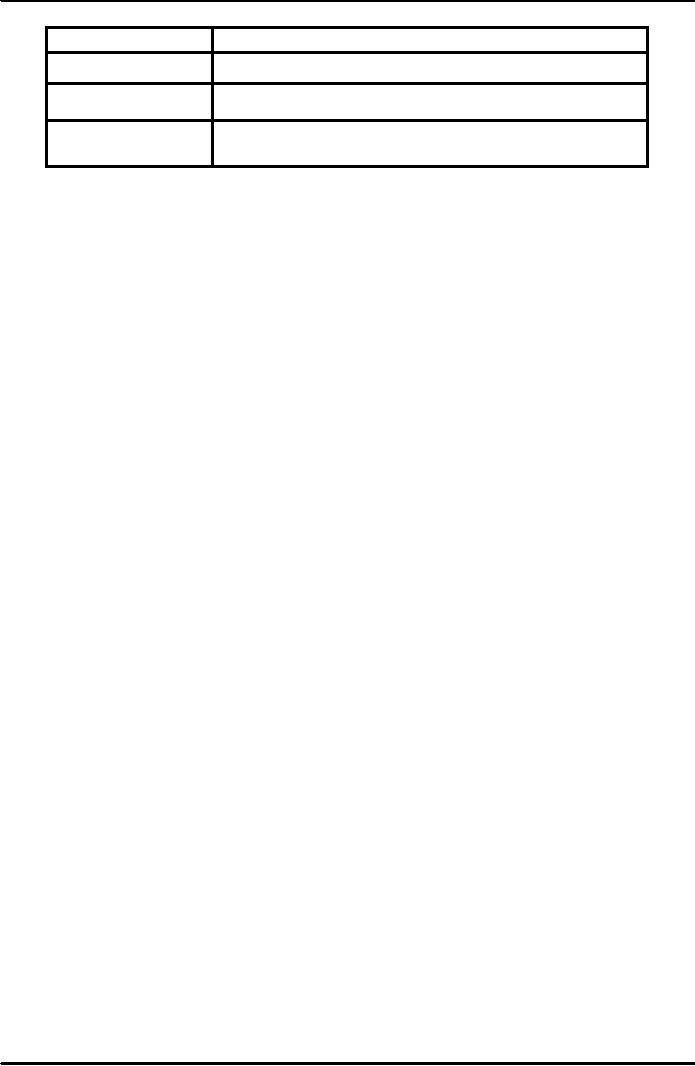 |

Money
& Banking MGT411
VU
Lesson
5
FINANCIAL
INTERMEDIARIES
Financial
Intermediaries
Financial
Instruments
Uses
Characteristics
Value
Examples
Financial
Intermediaries
The
informal arrangements that were
the mainstay of the financial system
centuries ago have
since
given way to the formal
financial instruments of the modern
world
Today,
the international financial system exists
to facilitate the design, sale, and
exchange of a
broad
set of contracts with a very
specific set of characteristics.
We
obtain the financial resources we
need from this system in
two ways:
Directly
from lenders and
Indirectly
from financial institutions
called financial
intermediaries.
Indirect
Finance
A
financial institution (like a
bank) borrows from the
lender and then provides
funds to the
borrower.
If
someone borrows money to buy
a car, the car becomes his or her
asset and the loan a
liability.
Direct
Finance
Borrowers
sell securities directly to lenders in the
financial markets.
Governments
and corporations finance their
activities this way
The
securities become assets to the lenders
who buy them and liabilities to the
borrower who
sells
them
Financial
and Economic Development
Financial
development is inextricably linked to
economic growth
There
aren't any rich countries
that have very low levels of
financial development.
Figure:
Financial and Economic
Development
Correlation=0.62
25000
��
�
�
Financial
Development is
20000
�
Hong
Kong
�
measured
by the commonly
��
used
ratio of broadly
defined
15000
�
money
to GDP. Economic
Korea
10000
�
development
is measured by
Malaysia
�
the
real GDP per capita.
�
5000
���
China
50
100
150
200
250
0
Financial
Market Development
14

Money
& Banking MGT411
VU
Financial
Instruments
A
financial instrument is the written
legal obligation of one party to transfer
something of value
usually money to another party at
some future date, under
certain conditions, such as
stocks,
loans,
or insurance.
Written
legal obligation means that
it is subject to government enforcement;
The
enforceability of the obligation is an
important feature of a financial
instrument.
The
"party" referred to can be a
person, company, or
government
The
future date can be specified
or can be when some event
occurs
Financial
instruments generally specify a number of possible
contingencies under which
one
party
is required to make a payment to
another
Stocks,
loans, and insurance are all
examples of financial instruments
Uses
of Financial Instruments
1.
Means
of Payment
Purchase
of Goods or Services
2.
Store
of Value
Transfer
of Purchasing Power into the
future
3.
Transfer
of Risk
Transfer
of risk from one person or company to
another
Characteristics
of Financial Instruments
Standardization
Standardized
agreements are used in order
to overcome the potential costs of
complexity
Because
of standardization, most of the financial
instruments that we encounter on a
day-to-day
basis
are very homogeneous
Communicate
Information
Summarize
certain essential information
about the issuer
Designed
to handle the problem of "asymmetric
information",
Borrowers
have some information that
they don't disclose to
lenders
Classes
of Financial Instruments
Underlying
Instruments (Primary or Primitive
Securities)
E.g.
Stocks and bonds
Derivative
Instruments
Value
and payoffs are "derived
from" the behavior of the
underlying instruments
Futures
and options
Value
of Financial Instruments
Size
of the promised payment
People
will pay more for an
instrument that obligates the
issuer to pay the holder a greater
sum.
The
bigger the size of the promised payment,
the more valuable the financial
instrument
When
the payment will be
received
The
sooner the payment is made the more
valuable is the promise to make it
The
likelihood the payment will be
made (risk).
The
more likely it is that the payment
will be made, the more valuable the
financial instrument
The
conditions under which the
payment will be made
Payments
that are made when we
need them most are more
valuable than other
payments
15

Money
& Banking MGT411
VU
Value
of Financial Instruments
1.
Size
Payments
that are larger are more
valuable
2.
Timing
Payments
that are made sooner
are more valuable
3.
Likelihood
Payments
that are more likely to be
made are more
valuable
4.
Circumstances
Payments that are made
when we need them most are
more
valuable
16

Money
& Banking MGT411
VU
Lesson
6
FINANCIAL
INSTRUMENTS & FINANCIAL
MARKETS
Financial
Instruments
Examples
Financial
Markets
Roles
Structure
Financial
Institutions
Examples
of Financial Instruments
Primarily
Stores of Value
Bank
Loans
A
borrower obtains resources from a
lender immediately in exchange
for a promised set of
payments
in the future
Bonds
A
form of a loan, whereby in exchange
for obtaining funds today a
government or corporation
promises
to make payments in the future
Home
Mortgages
A
loan that is used to
purchase real estate
The
real estate is collateral
for the loan,
It
is a specific asset pledged by the
borrower in order to protect the
interests of the lender in the
event
of nonpayment.
If
payment is not made the
lender can foreclose on the
property.
Stocks
An
owner of a share owns a piece of the firm
and is entitled to part of
its profits.
Primarily
to transfer risk
Insurance
Contracts
The
primary purpose is to assure
that payments will be made
under particular (and often
rare)
circumstances
Futures
Contracts
An
agreement to exchange a fixed
quantity of a commodity, such as wheat or
corn, or an asset,
such
as a bond, at a fixed price on a
set future date
It
is a derivative instrument since
its value is based on the
price of some other
asset.
It
is used to transfer the risk of price
fluctuations from one party to
another
Options
Derivative
instruments whose prices are
based on the value of some
underlying asset;
They
give the holder the right
(but not the obligation) to
purchase a fixed quantity of
the
underlying
asset at a predetermined price at
any time during a specified
period.
Financial
Markets
Financial
Markets are the places where
financial instruments are bought
and sold.
Enable
both firms and individuals to
find financing for their
activities.
Promote
economic efficiency by ensuring that
resources are placed at the disposal of
those who
can
put them to best use.
When
they fail to function
properly, resources are no
longer channeled to their best possible
use
and
the society suffers at large
17

Money
& Banking MGT411
VU
Role
of Financial Markets
Liquidity
Ensure
that owners of financial instruments can
buy and sell them cheaply
and easily
Information
Pool and communicate information about
the issuer of a financial
instrument
Risk
Sharing Provide individuals
with a place to buy and sell
risk, sharing them with
individuals
Financial
markets need to be designed in a way
that keeps transactions
costs low
Structure
of Financial Markets
Primary
vs. Secondary Markets
In
a primary market a borrower
obtains funds from a lender
by selling newly issued
securities.
Most
companies use an investment
bank, which will determine a
price and then purchase
the
company's
securities in preparation for resale to
clients; this is called
underwriting.
In
the secondary markets people
can buy and sell
existing securities
Centralized
Exchanges vs. Over-the-counter
Markets
In
the centralized exchange (e.g. Karachi
Stock Exchange www.kse.com.pk ), the
trading is
done
"on the floor"
Over-the-counter
(or OTC)
OTC
market are electronic
networks of dealers who trade
with one another from wherever
they
are
located
Debt
and Equity vs. Derivative
Markets
Equity
markets are the markets for
stocks, which are usually
traded in the countries where the
companies
are based.
Debt
instruments can be categorized as
Money
market (maturity of less
than one year) or Bond
markets (maturity of more than
one
year)
Characteristics
of a well-run financial
market
Low
transaction costs.
Information
communicated must be accurate and
widely available
If
not, the prices will not be
correct
Prices
are the link between the financial
markets and the real
economy
Investors
must be protected.
A
lack of proper safeguards
dampens people's willingness to
invest
18
Table of Contents:
- TEXT AND REFERENCE MATERIAL & FIVE PARTS OF THE FINANCIAL SYSTEM
- FIVE CORE PRINCIPLES OF MONEY AND BANKING:Time has Value
- MONEY & THE PAYMENT SYSTEM:Distinctions among Money, Wealth, and Income
- OTHER FORMS OF PAYMENTS:Electronic Funds Transfer, E-money
- FINANCIAL INTERMEDIARIES:Indirect Finance, Financial and Economic Development
- FINANCIAL INSTRUMENTS & FINANCIAL MARKETS:Primarily Stores of Value
- FINANCIAL INSTITUTIONS:The structure of the financial industry
- TIME VALUE OF MONEY:Future Value, Present Value
- APPLICATION OF PRESENT VALUE CONCEPTS:Compound Annual Rates
- BOND PRICING & RISK:Valuing the Principal Payment, Risk
- MEASURING RISK:Variance, Standard Deviation, Value at Risk, Risk Aversion
- EVALUATING RISK:Deciding if a risk is worth taking, Sources of Risk
- BONDS & BONDS PRICING:Zero-Coupon Bonds, Fixed Payment Loans
- YIELD TO MATURIRY:Current Yield, Holding Period Returns
- SHIFTS IN EQUILIBRIUM IN THE BOND MARKET & RISK
- BONDS & SOURCES OF BOND RISK:Inflation Risk, Bond Ratings
- TAX EFFECT & TERM STRUCTURE OF INTEREST RATE:Expectations Hypothesis
- THE LIQUIDITY PREMIUM THEORY:Essential Characteristics of Common Stock
- VALUING STOCKS:Fundamental Value and the Dividend-Discount Model
- RISK AND VALUE OF STOCKS:The Theory of Efficient Markets
- ROLE OF FINANCIAL INTERMEDIARIES:Pooling Savings
- ROLE OF FINANCIAL INTERMEDIARIES (CONTINUED):Providing Liquidity
- BANKING:The Balance Sheet of Commercial Banks, Assets: Uses of Funds
- BALANCE SHEET OF COMMERCIAL BANKS:Bank Capital and Profitability
- BANK RISK:Liquidity Risk, Credit Risk, Interest-Rate Risk
- INTEREST RATE RISK:Trading Risk, Other Risks, The Globalization of Banking
- NON- DEPOSITORY INSTITUTIONS:Insurance Companies, Securities Firms
- SECURITIES FIRMS (Continued):Finance Companies, Banking Crisis
- THE GOVERNMENT SAFETY NET:Supervision and Examination
- THE GOVERNMENT'S BANK:The Bankers' Bank, Low, Stable Inflation
- LOW, STABLE INFLATION:High, Stable Real Growth
- MEETING THE CHALLENGE: CREATING A SUCCESSFUL CENTRAL BANK
- THE MONETARY BASE:Changing the Size and Composition of the Balance Sheet
- DEPOSIT CREATION IN A SINGLE BANK:Types of Reserves
- MONEY MULTIPLIER:The Quantity of Money (M) Depends on
- TARGET FEDERAL FUNDS RATE AND OPEN MARKET OPERATION
- WHY DO WE CARE ABOUT MONETARY AGGREGATES?The Facts about Velocity
- THE FACTS ABOUT VELOCITY:Money Growth + Velocity Growth = Inflation + Real Growth
- THE PORTFOLIO DEMAND FOR MONEY:Output and Inflation in the Long Run
- MONEY GROWTH, INFLATION, AND AGGREGATE DEMAND
- DERIVING THE MONETARY POLICY REACTION CURVE
- THE AGGREGATE DEMAND CURVE:Shifting the Aggregate Demand Curve
- THE AGGREGATE SUPPLY CURVE:Inflation Shocks
- EQUILIBRIUM AND THE DETERMINATION OF OUTPUT AND INFLATION
- SHIFTS IN POTENTIAL OUTPUT AND REAL BUSINESS CYCLE THEORY